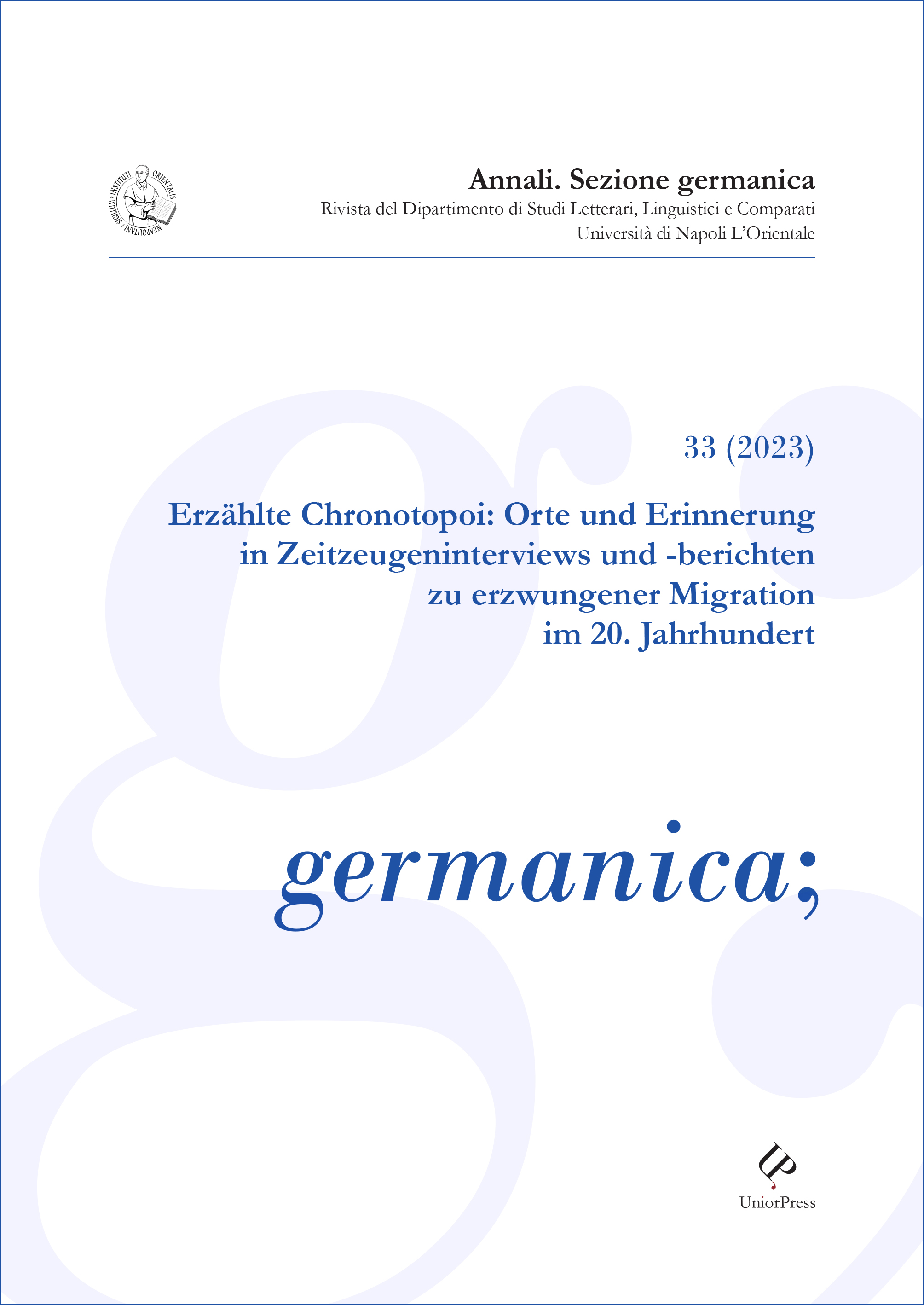‘Places of time’ in the corpus ISW. A linguistic analysis of the interplay between places, emotions and memories
DOI:
https://doi.org/10.6093/germanica.v0i33.10745Keywords:
Israelkorpus, emotions, places of time, ; thematisation of emotions, expression of emotionsAbstract
The aim of this paper is to investigate the connection between specific categories of places (see Flinz/Ruppenhofer 2021) and emotions (see the connection between “places of transit and emotions” in Flinz/Leonardi forthcoming) in the corpus Emigrantendeutsch in Israel: Wiener in Jerusalem (ISW). Indeed, as has been demonstrated, places and spatial elements, being anchor points for memory (Casey 1993: 172), are deeply intertwined with the memories that emerge during narration as well as with the emotional dimension (cf. Leonardi 2016). Places thus enclose events and experiences that are recalled by interviewees during the mnestic process. Old emotions are re-evoked and new ones emerge, which can be thematised, described and/or even expressed. In particular, we will analyse the category ‘typical places of’, focusing on both the thematisation and the expression of emotions at the linguistic level (see Fiehler 2011).
Downloads
Published
How to Cite
Issue
Section
License
The authors who publish in this Journal accept the following conditions:
- The authors retain the rights to their work and give the magazine the right to first publish the work, simultaneously licensed under a Creative Commons License - Attribution which allows others to share the work indicating the intellectual authorship and the first publication in this magazine.
- Authors may adhere to other non-exclusive license agreements for the distribution of the version of the published work (eg deposit it in an institutional archive or publish it in a monograph), provided that the first publication took place in this magazine.
- Authors can disseminate their work online (e.g. in institutional repositories or on their website) before and during the submission process, as it can lead to productive exchanges and increase citations of the published work (See The Effect of Open Access).


